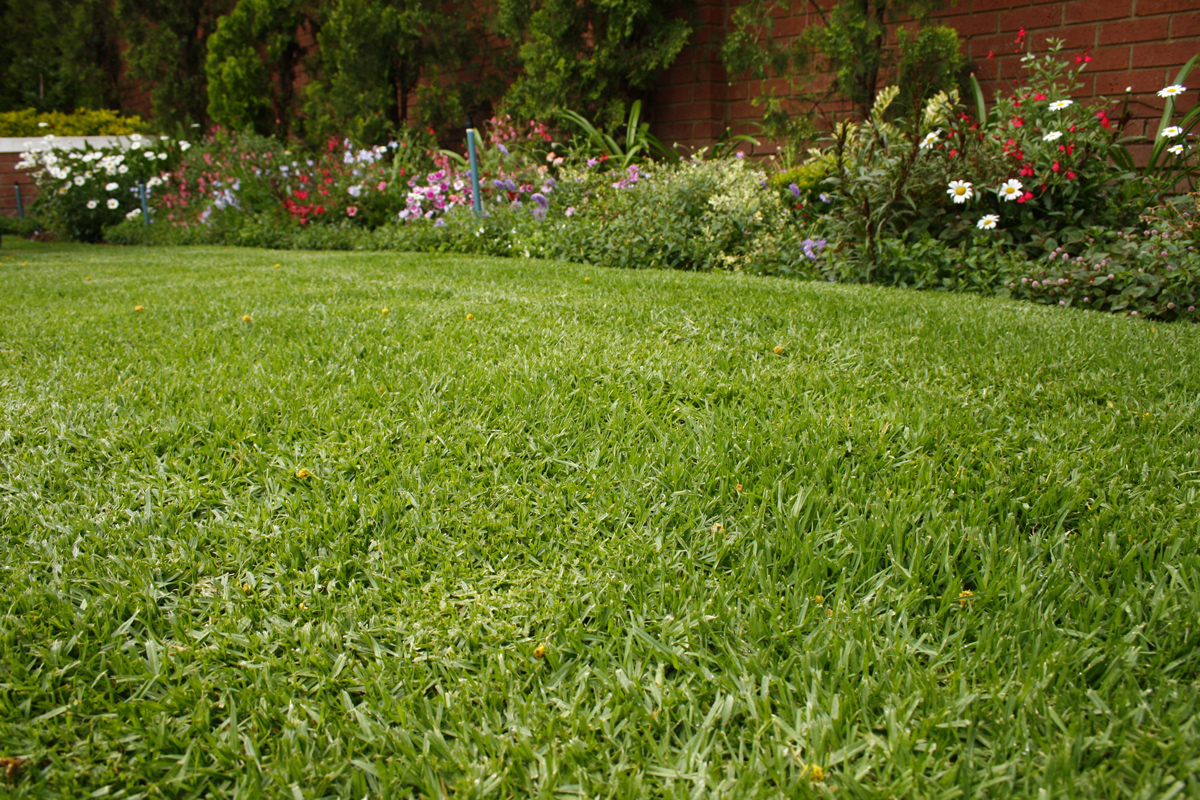
TEXT LOREN SHIRLEY-CARR PHOTOGRAPHS LOREN SHIRLEY-CARR AND SUPPLIED
Also see: Wesgro invests Millions into SA's plnt-based Agricultre sector
“As long as you choose the right grass for your area and manage it cleverly, it is in fact, one of the most effective methods of reducing water run-off thereby preventing water loss,” says Richard Erasmus of Lawnpro.
Traditionally,
lawns took up the largest area in a garden. Due to water, time and space constraints, gardens today usually have a single area of lawn with other materials such as gravel and paving used in awkward spots, or in areas where grass is difficult to grow. To reduce the size of your lawn, gardening expert Keith Kirsten has these tips:
Instead
of lawn on your pavement, plant hardy perennials and groundcovers with mulch pathways leading through them. Rather than growing lawn in the narrow strip between your pool and flower bed, let the bed come right up to the pool; grow shade-loving plants and groundcovers between pavers in the narrow alley between your home and boundary wall.
Replace
lawn in courtyards with gravel, or pave without grouting so that water can penetrate into the soil; intersperse with indigenous groundcovers, for example, hen-and-chickens. Plant a meadow garden with endemic wild grasses to attract wildlife such as birds and beneficial insects. This will survive on natural rainfall and become dormant in winter.
Related to water-wise lawns:Groundcovers and why it’s a good idea to grow them
According
to Richard Erasmus, warm season lawns, like kikuyu, buffalo/St Augustine, LM grass and Cynodon species, require a lot less water than cool season grass blends, which include shade and evergreen varieties. In summer-rainfall regions, these warm season lawns only require watering once a week in summer for about half an hour (about 25mm of water). In winter, watering can be reduced to once every second week, or stopped altogether, if water restrictions are in place. These grasses will go dormant if not watered and will revive in spring.
highlights lawns that can withstand low-water conditions
Water-wise lawn - buffalo grass
Indigenous to the Cape and coastal areas, this semi-shade-tolerant, broad-leafed lawn can survive low water conditions better than most other species. It grows well in sandy soils and is saline tolerant.
Water-wise lawn - kweek
Probably the most water-wise grass, this fine-leafed lawn is indigenous to the Cape. It’s resilient in all regions. It’s saline tolerant, but not good for shady areas. As it’s deep rooted, it prefers infrequent, deep watering and sandy soils.
Read also: Navigating an economy hit by downgrades
Water-wise lawns - kikuyu grass
This grass is hard wearing and grows well in all soil types. It likes a fair amount of water, but has excellent regenerative qualities, bouncing back after periods of dormancy in times of drought. It doesn’t like shade and can be invasive.
More Like Water-wise lawn care: Make self watering containers
Keith Kirsten
has these tips on how to keep lawns looking healthy without excessive use of water:
In winter
and summer-rainfall areas, reduce watering in winter as the lawn isn’t growing as actively. In winter-rainfall areas, cut out watering altogether unless absolutely necessary. In summer, water deeply, but less frequently to encourage a deep root system, which makes the lawn more resilient.
Water only
in the late afternoon or early morning to reduce evaporation. Early mornings are best as the grass won’t remain damp for too long, minimising the chance of fungal diseases.
In very hot conditions, don’t mow too low, leave some leaf cover to protect the roots.
Leave lawns
longer in shady areas as larger leaf blades get more exposure to the light. By doing this you can create interesting shapes by combining two different blade heights.
All new lawns
require water once they are planted, whether from seed, seedlings, lawn plugs or instant lawn. Although more expensive, instant lawn settles quicker than other planting methods, enabling you to follow general watering regimens a lot sooner,” says Richard Erasmus.
According to
David van der Byl, correct soil conditioning and preparation are key to being water wise.
"Make sure your soil is well composted before installing new lawn. Organic material holds moisture better. Add a water-retentive product like vermiculite. The healthier the grass and soil, the easier it is for the lawn to survive times of drought"
Read the full article here at SA's favourite Garden & home Magazine